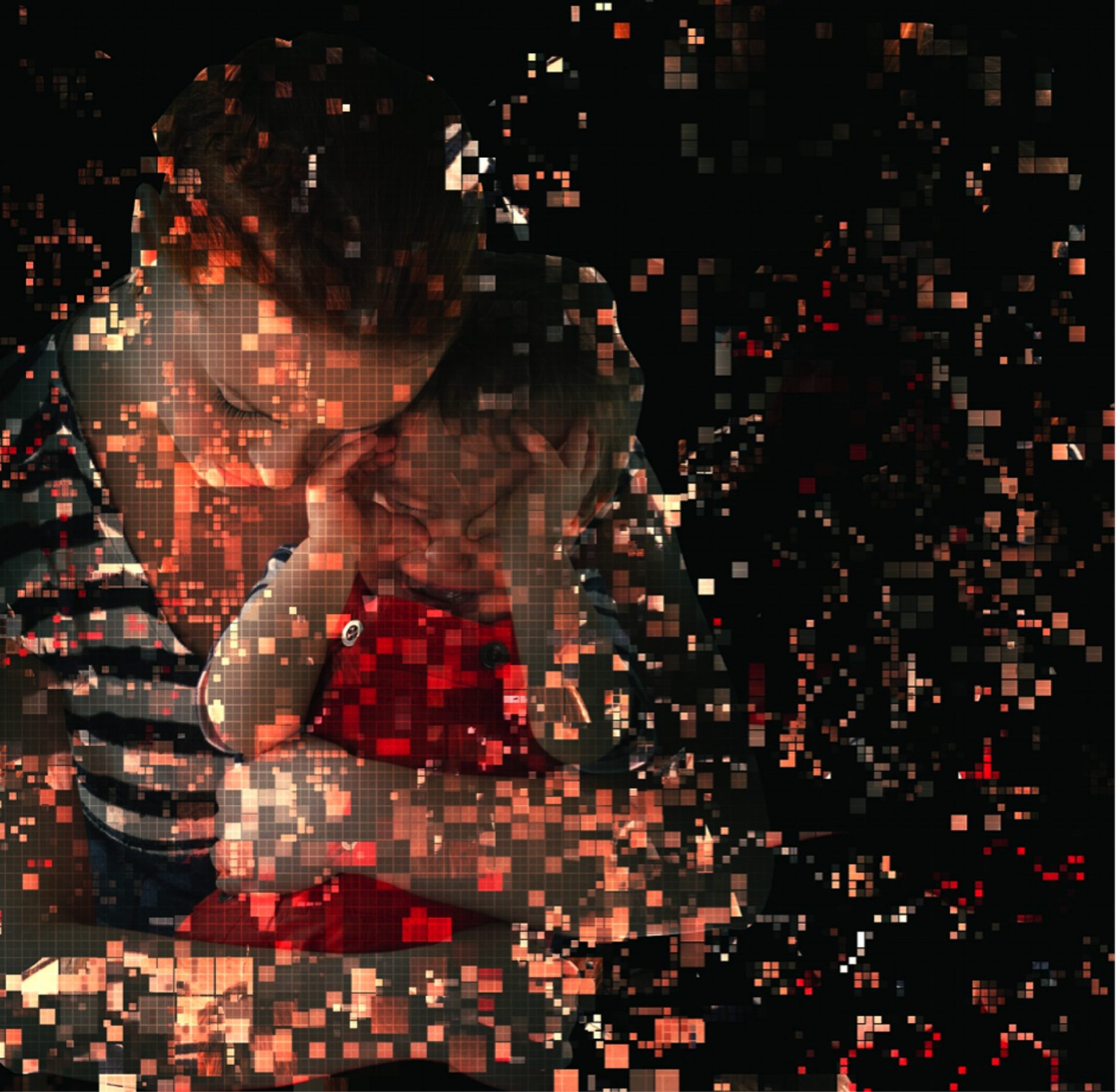Childhood Illness : the family impact
For this family, the diagnosis of their son’s brain tumour was a tumultuous event that changed their lives forever. A decade later, the family is still dealing with the ‘late effects’ of the treatment. Even though they have adjusted to the changes, the diagnosis has changed their lives and the impact can never be reversed. It was a humbling experience listening to their journey. I hope I have expressed the devastation of the diagnosis caused to the family through my artwork of a mother and child. The shattered image represents the devastation the diagnosis caused for the child as well as the impact it had on everyone around him. I have attempted to show the complexities involved in providing whole-person care when the mind, body and soul of the patient are all affected. I have used the image of a screaming child to express the difficulties faced when dealing with children, who may be unwilling or unable to express their own feeling, emotions and concerns. I hope the image serves as a reminder that sometimes it is impossible for medicine to reverse the impacts of disease, sometimes all we can do is support people and families so they can eventually find a way to accept and adapt to the challenges they face.
Producing this artwork reminded me that medicine is more than the biochemical and physical levels of the disease.
Talking to the family, I understood that for many, medicine is a process of healing and not necessarily about finding a cure.
Producing this artwork reminded me that medicine is more than the biochemical and physical levels of the disease.
Talking to the family, I understood that for many, medicine is a process of healing and not necessarily about finding a cure.
Whole Person Care, Year One, 2016

This piece stood out to me as a reminder that medicine is primarily focused around people. We work with real life families that are vulnerable, their lives being ripped apart as shown in the picture, and it is important to understand their story and offer what support we can to them. This image centres around a mother and her child, expressing the deep family bond that is still visible amongst the chaos of illness – the pixels. I take that it is important to nurture this bond to aid in the treatment and recovery to bring the pixels back to restore or replace the image. I find this piece very strong and thought provoking, telling me to never forget or neglect the emotions that patients and their families will be feeling and to work to support and help them move through their struggle.
This creative piece has triggered my thinking beyond the topic of childhood illness, but I also see the different dimensions of diseases, health care and the impact of an illness on someone’s life from that point of developing it onwards. It illustrates how a disease can permanently change a person’s life which is portrayed by the shattered blocks that are rearranged to form a new image. Although some part of the original image is retained, the art piece now has a new identity to it – just like the patient after recovery from their illness. If every illness adds a new story to someone’s life and forms their new identity, then throughout our lives, how many times can we deviate from the identity we are satisfied with or wish to be? Illnesses can bring frustration and obscure our sense of purpose in life. Some can be prevented by making lifestyle changes but there are also those that can’t be such as genetic disorders. Since sometimes they’re simply inevitable, how do we ‘adapt’ ourselves to live a happy life with/after an illness? Perhaps health care is much more than just curing a disease but it concerns how a person can feel equipped to deal and live with an illness while fulfilling all of their life potentials. Living the longest life may not be as rewarding as living the fullest life.
This piece makes you think about what medicine means. It reminds us that it is easy to lose sight of the patient and their pain with everything else that is going on. Although at first you might not be able to see the child and the mother you soon realise that they are the main focus of the portrait and even though they are surrounded in darkness they come through.
This piece clearly expresses the impacts of disease beyond the patient. A strong bond between mother and child is portrayed and the shattered overview highlights the disastrous effects on them both. This focus on social and familial impacts, rather than biochemical and physiological, is a touching reminder of the importance of whole person care and bringing the family into the picture, rather than neglecting them. The shattered appearance signifies how these impacts are often permanent and life changing, making them difficult to repair. It has a powerful message that should not be forgotten in situations where the family is just as important as the patient.
To me this piece shows the shattering effect of getting the news of a childhood illness, how this news is so shocking it feels like the parents life they wanted for their child has been ruined. But I also believe it shows how illness takes away a patients childhood piece by piece. What should be a complete, happy childhood is now being taken away with each piece, maybe each test or diagnosis. It shows how sometimes it can feel like the ‘darkness’ (illness) is taking parts of their life, a little bit at a time. The picture that can still be seen though, shows that although things are being taken away, the mother is still embracing the child. This emphasises how important a good support system can be in a time of crisis.